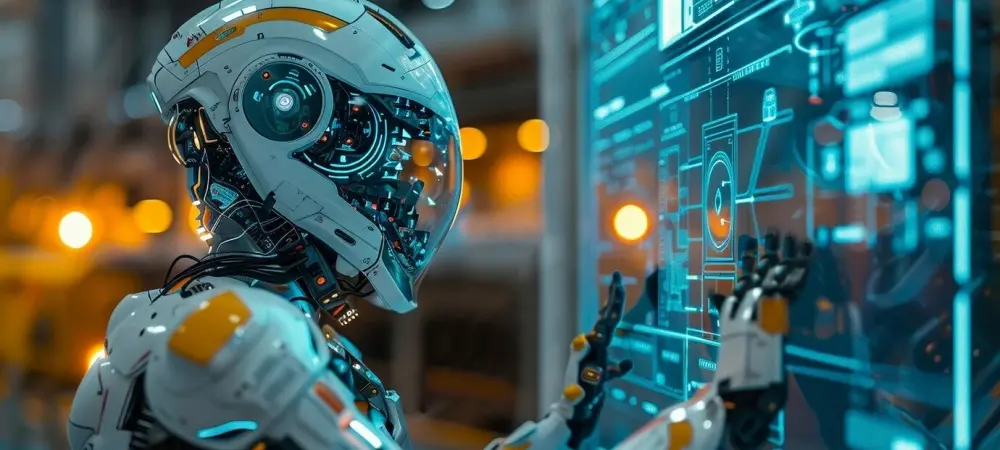In recent years, the synergy between artificial intelligence (AI) and robotics has captured the imagination of both industry leaders and the general public, prompting questions about the potential of a future reminiscent of science fiction. As society navigates the challenges introduced by the Fourth Industrial Revolution, the union of AI and robotics emerges as a critical element in transforming daily operations across sectors. This transformative period offers an unprecedented opportunity to enhance societal structures, elevate economic progress, and fundamentally improve the quality of life for individuals globally.
AI’s integration into robotics is not solely about mechanizing tasks traditionally performed by humans; it represents a seismic shift akin to previous industrial revolutions. By converging digital intelligence with physical machinery, AI-enhanced robots promise to automate complexities, revolutionize service delivery, and even fill gaps in workforce shortages. This fusion is moving beyond theoretical discourse and into tangible advancements, positioning society on the brink of an era where AI and robotics merge seamlessly into the fabric of both commercial enterprises and household environments.
Features and Performance of Integrated Technologies
Intelligent Automata
A pivotal component of this technology is intelligent automata, where machine learning algorithms enable robots to decipher tasks with precision formerly reserved for human abilities. Intelligent automata function as the brain within robotics systems, employing advanced data processing to execute precise actions across diverse scenarios. The performance of such systems hinges on their ability to autonomously adapt and learn, fostering environments where robots move beyond simple task execution to engage in complex problem-solving.
Intelligent automata’s significance is further underscored by their ability to redefine system efficiency. Instead of merely performing repetitive tasks, these automata adapt dynamically to the environment by recognizing patterns and predicting outcomes. This adaptability is paramount to the robotics ensemble, ensuring that systems not only respond to stimuli but actively create optimized responses based on learned experiences.
Sensor and Perception Systems
Critical to the efficacy of AI and robotics integration is the underpinning architecture of sensor and perception systems. These systems are the sensory organs of robots, equipping them with the ability to perceive and interpret their environment accurately. Sophisticated sensor arrays, including LIDAR, cameras, and ultrasonic sensors, enable robots to gather, process, and analyze data from their surroundings. The performance of sensor and perception systems is judged by their ability to replicate human senses and integrate this information seamlessly into robotic actions. In practice, these systems enable robots to navigate new areas, identify objects, and make informed decisions based on real-time data inputs. As research continues, the growth in sensory precision and perception is paving the way for robots to assume sophisticated roles across varied industries.
Innovations and Emerging Trends
Recent endeavors in AI and robotics have witnessed a surge in innovation, driving new trends that influence both consumer preferences and industrial standards. Interdisciplinary collaboration has catalyzed the emergence of robots capable of executing complex, dexterous tasks in unprecedented settings, ranging from manufacturing floors to living rooms. This shift exemplifies the broader trend of democratizing automation, making it both accessible and applicable across domains.
Shifts in consumer behavior point toward a growing acceptance and demand for smart robotic systems within personal and commercial realms. Alongside traditional manufacturing and industrial applications, these innovations are increasingly seen in healthcare, where robots assist in surgery, elderly care, and logistics operations, providing tangible value in scenarios that demand precision and consistency.
Practical Applications Across Industries
Robots empowered with AI are breaking new ground in various sectors, making significant differences in operational efficiencies and consumer experiences. In manufacturing, AI-driven robotics streamline assembly lines, reducing human error and boosting production speeds. In another field, agriculture, AI-integrated drones offer monitoring and maintenance solutions that previously required extensive human involvement.
Healthcare stands as another beneficiary of this technology, where AI-infused robotics revolutionize supply chains through the active deployment of medical essentials, particularly in remote or hard-to-reach areas. The strategic implementation of robotics in these applications underscores their potential to revolutionize traditional practices, offering new avenues for efficiency and safety.
Addressing Challenges and Limitations
Despite its promise, AI and robotics integration faces challenges that may hinder its broad acceptance and effectiveness. Technical constraints, particularly regarding sensory and spatial awareness, limit the extent to which robots can interact with their environments. On the regulatory side, evolving guidelines attempt to balance innovation with public safety, sparking debate over ethical concerns and data privacy.
Efforts to mitigate these hurdles are ongoing, with stakeholders working diligently to develop sophisticated sensory apparatus and robust AI training models. Researchers and technologists alike are committed to overcoming these challenges, paving the path for future enhancements that would allow robots to perform more diverse roles safely and efficiently.
Looking Ahead
The trajectory of AI and robotics integration points toward a future characterized by continuous improvement and unforeseen breakthroughs. As technology evolves, researchers anticipate advancements in machine autonomy and decision-making, driving the industry toward a paradigm where AI-infused robots become integral to day-to-day life.
The potential societal impact of these technologies is immense, offering prospects that stretch beyond current constraints. Future developments are expected to refine robots’ cognitive abilities, making them indispensable partners in both consumer and industrial contexts. This transformative journey will require thoughtful collaboration across industries to ensure the underlying technology aligns seamlessly with human values and societal goals.
In conclusion, AI and robotics integration showcase significant maturity in both innovation and application. While challenges persist in areas such as technical capability and public acceptance, the progress achieved thus far marks a pivotal moment for the technology. Industries benefiting from robotics continue to expand, while ongoing research targets the limitations faced. The deliberate fusion of AI with robotics suggests a future brimming with possibility, promising a material difference to global technological landscapes as foundations for the Fourth Industrial Revolution solidify.

